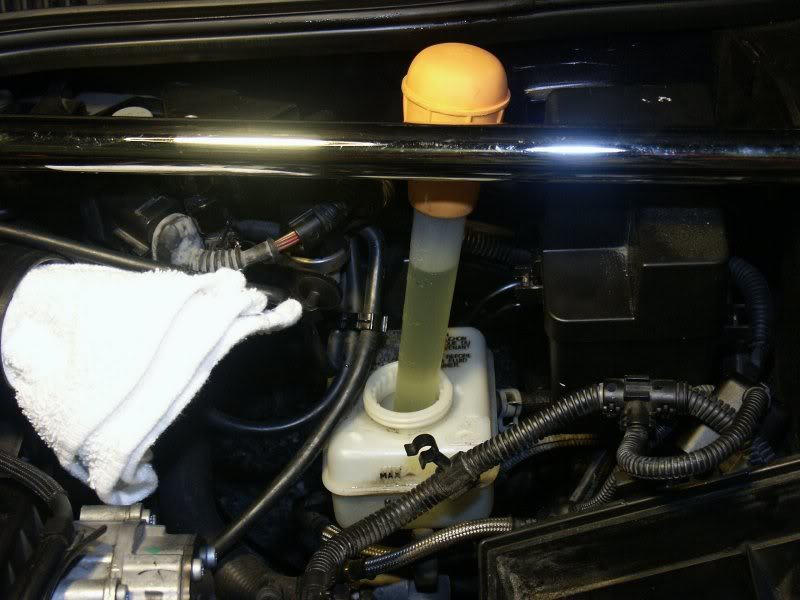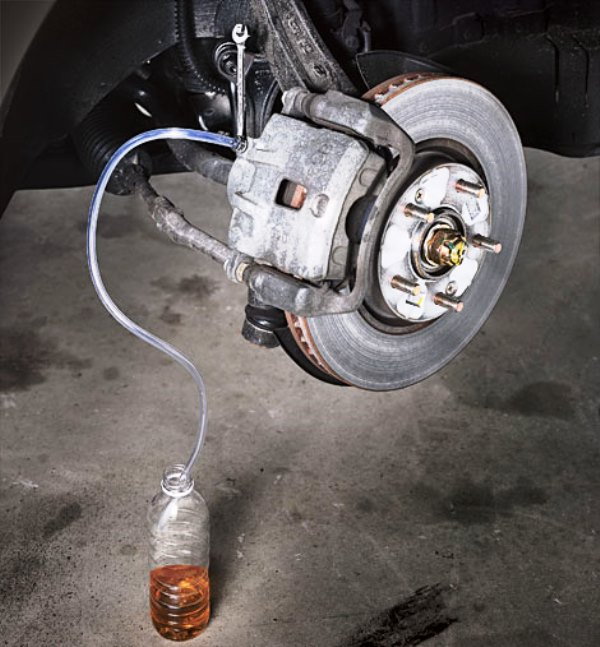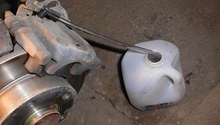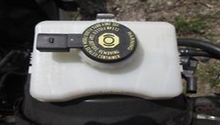Audi A6: How to Flush the Brake Fluid
Old brake fluid absorbs water, causing internal corrosion of your lines and calipers, not to mention that it is more prone to boiling and a loss of performance.
This article applies to the Audi A6 C5 and A6 C6 (2004-2011).
Flushing the brake fluid is the process of removing the old, degraded brake fluid from your brake system, then replacing it with new, fresh fluid. The process requires you to bleed the system, as you pump fluid through all the lines and calipers, eliminating any trapped air. Flushing the brake fluid to get rid of the old fluid should be done every 30,000 miles, or every other year, to keep your brake system healthy. Read on to learn how to empty, refill, flush, and bleed your brake system.

Materials Needed
- Wrench
- Hose
- Empty bottle
- Turkey baster
- Brake fluid
- An assistant
Step 1 – Remove old fluid
Using your turkey baster, remove as much of the old fluid from the master cylinder as you can. Be careful not to drip any on a painted surface, or it will soften your paint and ruin it. If you do spill some, rinse it with water immediately, but don't wipe it or you can make it worse.

Step 2 – Refill with new fluid
Refill the master cylinder with new brake fluid. Fill it up until you reach the max line.

Step 3 – Bleed the brake system
Flushing the brakes uses the new fluid to push out the old fluid through out the system. It is accomplished the same way you bleed air from the brake system. You should bleed the calipers starting at the one furthest from the master cylinder, meaning the passenger side rear caliper, passenger front caliper, then driver side rear caliper, and finally ending on the driver front caliper.
Locate the bleeder screw on the back of each brake caliper, then connect your hose to it. You can do that without removing your wheels or jacking up your car; however, it is easier if you jack it up. Place the other end of the hose in an empty bottle to catch the fluid.
Ask your assistant to pump the brake pedal a few times, then keep it pressed. With the brake pedal pressed down, loosen the bleeder screw with your wrench. Watch as the old fluid comes out of your caliper, and wait for the new brake fluid to start coming out. You may have to repeat the tighten screw, pump brakes, hold, loosen screw, process a few times before fresh fluid starts to flow. Once you see fresh looking fluid with no air bubbles in it, tighten the bleeder screw first, then ask the helper to release the brake pedal.
Repeat the same process on the rest of the brake calipers; however, be sure to refill the master cylinder with fresh fluid between bleeding each caliper. If you wait for the fluid to get too low in the master cylinder, you may introduce air in the system and you will have to bleed the whole system again. Once you're done with all four calipers, refill the master cylinder to the max line.

Related Discussions
- Bleeding Brake System - AudiWorld
- Brake Fluid Flush - AudiWorld
- Brake Bleeding Sequence - AudiWorld






